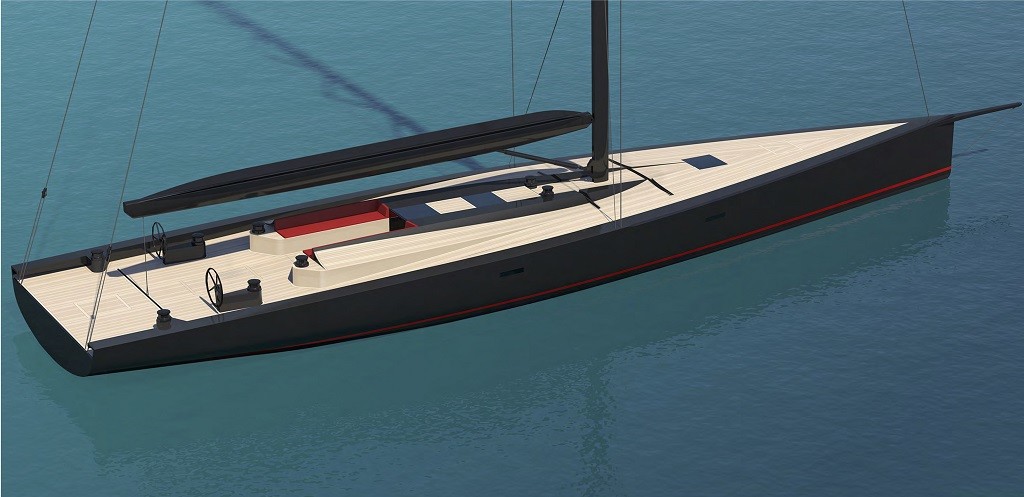[dropcap]P[/dropcap]hilippe Briand, the London-based Naval Architecture and Yacht Design firm, has released a newly evolved concept design [highlight color=”yellow”]for the Wally Cento racing class[/highlight], drawing on his personal experience as an outstanding competitive sailor and longstanding superyacht designer. The P100 will offer its owner a vessel of style and comfort with a previously unattained level of performance in the class, ideal for sailing in Porto Cervo or taking part in the Bucket regattas.
Over the years, Wally yachts have gathered momentum as a competitive racing fleet, and Briand’s highly technical background in naval architecture and design on a range of winning vessels ideally places him to create the next evolution in the class.

The aim was to push the envelope like has never been done before, evaluating the feasibility of the basic structure specified by the class. With his team of designers, Briand carried out a thorough assessment of every detail in the concept’s form, using computational fluid dynamics (CFD) analysis as well as velocity prediction program (VP) calculations.
Working through a number of iterations in the hull form, the resulting concept design has a lower freeboard and slightly narrower beam than is commonly seen in the class. An intermediate light displacement boat, it will weigh 2T less than the upper limit dictated by class rules, and is expected to be 20 seconds faster over a mile than reference yacht S/Y Magic Carpet. This reduced weight is provided in part by a novel “roller coaster wave” form for the teak decking, which is dictated by the class rules to maintain the high quality look of the fleet.
The weight efficiency carries through to the interior of the P100, which must be aesthetically pleasing and befitting of a luxury yacht, yet make use of light materials in the ceiling and wall finishes to qualify for the class.
Moulded carbon fibre furniture will be light and robust but with a feeling of softness, the major inspiration for the interior being taken from sporty automotive design.
“We considered the merits of each element in the P100 design, using technological advancements and through analysis to create a truly unique concept. The combination of technical enhancements and design features results in a beautiful project that promises top competitive performances,” said Philippe Briand on his evolution of this design.
[toggle title=”About Philippe Briand” state=”close”]London-based Philippe Briand has been conceiving high-performance yachts since his La Rochelle childhood, and histechnical excellence and precision – accompanied by a strong artistic flair – have continued to evolve over what isarguably the most prolific career of any yacht designer today. Early insights into naval architecture, advanced hydrodynamics and production engineering during an internship withSwedish designer Pelle Petterson armed Briand with the skills to create dozens of successful production yacht models,of which over 12,000 vessels have been built. His portfolio spans four decades, starting with his first IOR Quarter Ton design at the age of 16. His designs forcompetition have included eight yachts for six America’s Cup campaigns; two of the vessels for the French team thatwon the Admiral’s Cup in 1991; and countless high-performance offshore racing yachts. An accomplished sailor himself,Briand has won the Half-Ton Cup in 1993 and the One-Ton Cup in 1994, in yachts of his own designs.Briand’s first foray into superyachts came in 1995, with a winning submission for the design of the groundbreaking,award-winning 44.7m S/Y Mari Cha III, and then Mari Cha IV. The success of these lightweight, high-performancecruising racers propelled him into the world of superyachts, where he has enjoyed considerable success.[/toggle]






